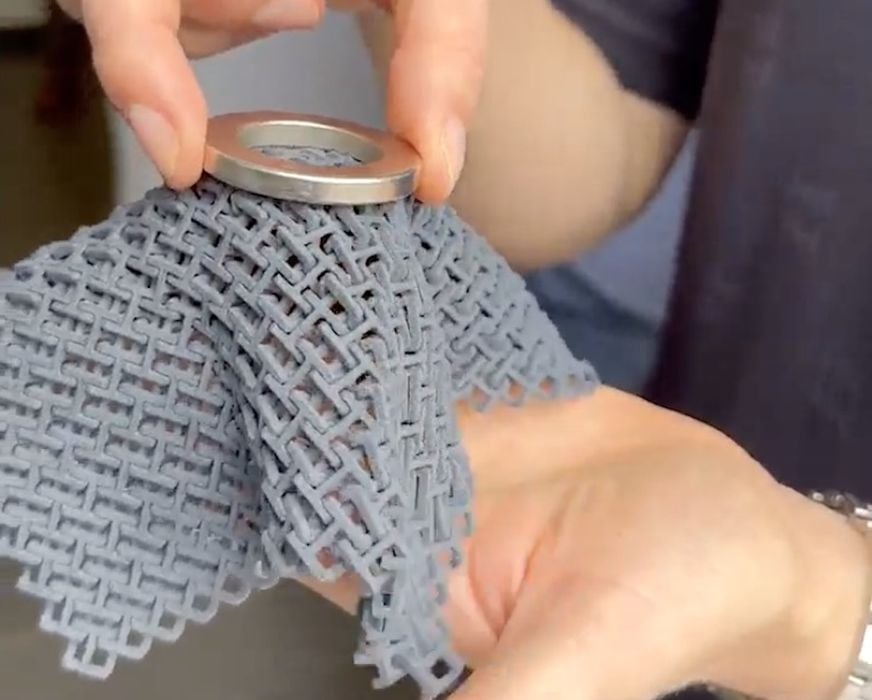
Can 3D prints be magnetic? It turns out, they can.
A LinkedIn post from EOS’ Björn Schneider shows what appears to be a polymer print that reacts to a magnet.
How is this possible? Schneider explains:
”Excited to showcase a great polymer example from our partner LMD GmbH printed on an EOS P396 SLS polymer printer. This solution combines the strength of polymers with metal powder to create magnetized parts, offering benefits like magnetic detectability in sensitive environments such as food production and packaging.”
Evidently they composed a new 3D printable material for the EOS SLS process that mixes a proportion of very fine metal powder with a standard polymer. The resulting print includes the metal, which is attracted to the magnet. It seems that the metal powder itself is magnetic.
This is quite intriguing, and I’ve never seen this approach previously. Magnets are commonly used in 3D prints, as they can be embedded within a 3D printed part. This new materials approach could enable some rather interesting 3D printed parts.
While the LMD experiment involved SLS, it would likely be possible to use this materials approach in filament production for FFF use. If one had a spool of this material, it could be used in multimaterial 3D printers, including the Bambu Lab AMS, to selectively print magnetic zones.
That could reduce the need for embedding magnets within 3D prints, and speed up the operation significantly: embedding magnets requires the print jobs to stop, allowing the operator time to manually insert the magnets. If you can print them instead, then the job doesn’t need to stop.
I can imagine a wide range of applications for this magnetic material, including self-aligning lids, snap-on covers, self-assembling structures and much more.
There are several metal-infused filaments on the market today, so developing a filament version of this should be feasible. It would likely require use of a hardened nozzle to prevent abrasion from the metal particles, however.
One question I have is the cost of this material. If it is sufficiently inexpensive, then we could see widespread use in desktop 3D printing. If it is expensive — and it likely will be — then it will be rarely seen.
Via LinkedIn
